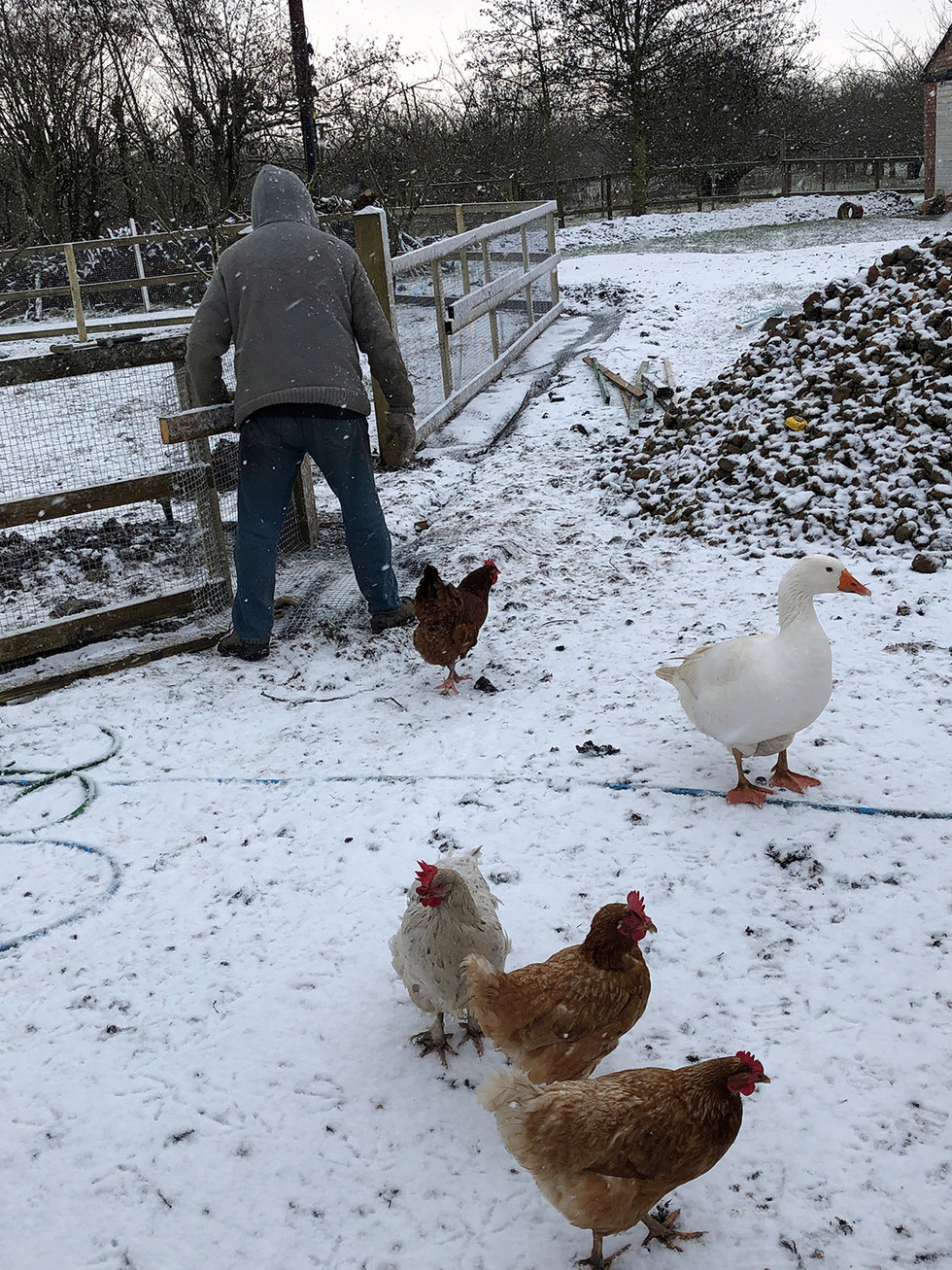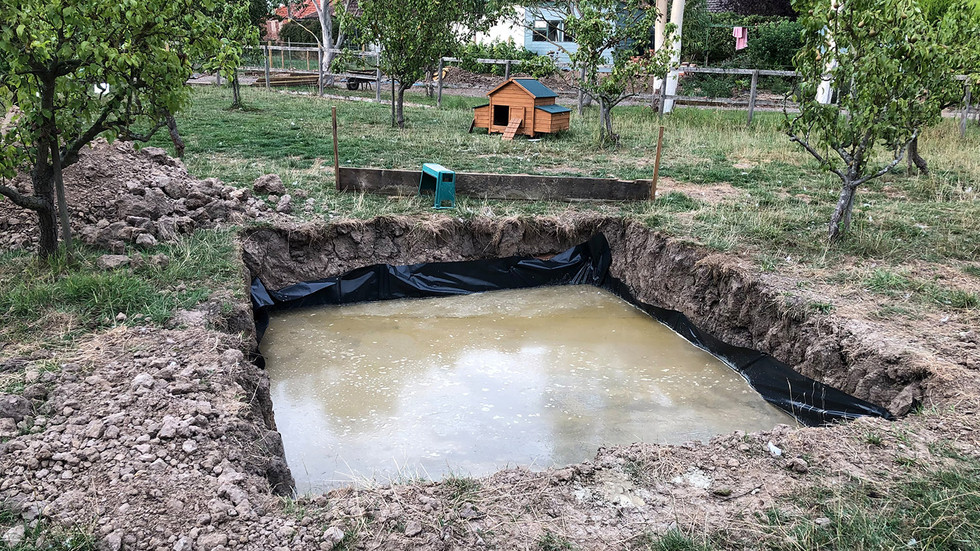THE POULTRY ENCLOSURE
- Chris Berry
- Mar 10, 2021
- 3 min read
One of the features with our property when we acquired it was a sizeable poultry enclosure. It didn’t take long for Helen to introduce several hens and a duck to our lives and then other birds started arriving such as geese and more ducks. The enclosure was cleverly constructed with wire mesh from the fence extending into the ground to prevent foxes digging under it and for a while all was well. However, one morning we awoke to find a dead goose and a big hole in the fencing where a fox had been able to push through the rusting wire. Effectively age was taking its toll on the enclosure’s fence (it was, we worked out, more than 15 years old) and so we quickly decided to replace the fencing and add an electrified tape around the fence as well. The birds were moved to a temporary home close to the house and the job was started... in the depths of winter 2018, needs must and all that.
The old fence was quite difficult to remove as the wire had rusted (especially underground) and hence broke up leaving pieces to be dug out separately. Once it was all removed and disposed of the installation of the new fence could begin. We decided to put new posts in slightly different positions as some of the old posts had broken off underground and it would be hard to remove them, so we set out a new layout and started by driving in the new posts. We then dug a 450mm deep trench out about 300mm from the fence line. New heavy duty 1.8m high wire mesh was then installed on the new fence posts with the excess being folded out at down into the trench before being re-covered with soil. It was hoped this would provide an even more difficult challenge to any fox or other type of predator. After this the new rails were attached and a new gate and gateposts installed. Electricity was provided to the enclosure via an armoured cable fed from the barn and this was terminated in a meter box secured to the fence inside the enclosure. Into this was mounted a hefty electric fence system that was then wired to a dual tape system around the top of the fence with one tape against the fence and another on extenders about 200mm off the fence in an effort to prevent any predators jumping over.
The birds were then returned to their new and much safer home. The final initial construction task which was carried out once the birds were back inside was to install 20 tonnes of 40-70mm stones around the perimeter fence to stop any digging from the hens etc. on the inside as this could weaken the externakl defences significantly.
Pictures of this project are a little sparse as it was so damn cold when we were doing it, but below are a few shots of what we started with and the work involved.
A further enhancement that was actually underway when we had the ‘fox break in’ was to dig a 4m x 3m x 1.2m duck pond which was then lined with a waterproof concrete base and block walls rendered with waterproof render. A large filter and recirculation system was installed, and the pond was edged with grey smooth flags. This proved a big hit with the ducks and the geese, but even with the filter it needs draining and cleaning three or four times a year. Eventually the filter malfunctioned and we replaced it with a better recirculation pump but this does not work so well either and the pond often gets algae infected or just smells foul so we’re currently looking at ways to prevent this by changing the way the pond system works altogether as cleaning it is not a joyous experience. Another issue was that two hens drowned in the pond (on different occasions) and to combat this we divided the enclosure in two with a fence and extra gate so the ducks/geese live in the side with the pond and the remaining birds, manly hens, live in the other side and are safe from drowning.
In the very wet winter of 2020-2021 the enclosure suffered with some areas waterlogging which made looking after the birds difficult and didn’t provide them with a particularly nice habitat. To help with this we have laid more 40-70mm stones/gravel in the areas most prone to waterlogging and also laid more of these round the edge of the inside of the enclosure again to help with predator control. This has helped keep the enclosure more inhabitable in the winter months. The next task is to try and fix the pond recirculation and keep it cleaner as a result, but thus far finding a way to do this is proving elusive.
Some further images showing the duck pond dig and the finished article on a lovely snowy day.



















Comments